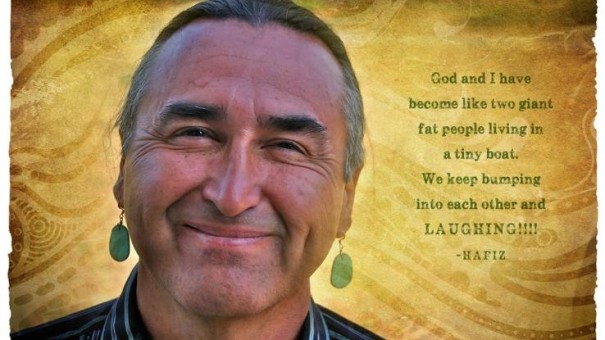
By Richard Twiss. Walking the way of Jesus has meant embracing my Native American Heritage. My father is Oglala Lakota/Sioux from the Pine Ridge Indian Reservation and my mother is Sicangu from the Rosebud Lakota/Sioux Indian Reservation, both located in South Dakota. I lived among my mother’s people as a child.
When I was 18, I participated with 600 others in the American Indian Movement’s forced takeover and occupation of the Bureau of Indian Affairs Office Building in Washington, D.C. We protested the federal government’s breaking of more than 700 congressionally ratified treaties with our tribes. For eight days we occupied the building and were surrounded by riot police. During this period, I allowed hatred toward white people to grow in my heart.
A few years later, however, after enduring drug and alcohol addiction, a stint in jail, and a growing despair over my lostness, I became a follower of Jesus.
Many tribes refer to North America as Turtle Island. More than 700 different tribes believe that Creator put them on this land long before Columbus got lost and “discovered” the New World. In Acts 17:26 Paul writes about how Creator pre-determined times and places for people to dwell in. We are the First Nations peoples of Turtle Island. It would appear Creator brought the Europeans to Turtle Island, too. Perhaps in Jesus, we could have walked together as brothers and sisters, forming a great new community of Christ. But it was not to be. Instead, our people suffered the horrors of genocide and ethnic cleansing. What makes the story most tragic is that biblical narratives were misappropriated to validate these atrocities. Thankfully, however, the story is not finished.
As I have reflected on my conversion experience, I am glad I did not find faith in Jesus in a church building; it spared me from having become Baptist, Presbyterian, Anglican, Pentecostal, or Wesleyan. I just became a follower of Jesus!
But then I was told I needed to become a Christian too, specifically a Euro-American Christian. I learned that only English speakers had the “Authorized” version of the Bible. I discovered the Christian culture, complete with Christian music, Christian T-shirts, and even Christian haircuts. It was almost as if the Bible read, “When a person becomes a Christian they become a new creation. Old things pass away and all things become white.”
When Jesus came into my life and overwhelmed me with his love, I wanted nothing more than simply to follow him. I began a life of transformation because he rescued me from a life of addiction, abuse, self-destruction, and likely from a premature death. I longed for the same transformation for our people. Yet I found myself tripping over the cultural trappings of American Christianity. Following the ways of Jesus seemed one thing; becoming a white Christian quite another.
Yet, in spite of all of this, I find in Jesus the possibility for forgiveness, reconciliation, and the path toward Shalom alongside my fellow human beings. We are all ikce wicasa “common human persons” on this road, and Jesus shows us there is always hope for redemption.
The phases of my journey have looked very different. I pastored an Anglo congregation for 13 years and worked for the International Bible Society. I’ve led Native cultural performing arts groups to places like Tibet, China, Pakistan, and Peru. Along the way, I’ve had the privilege of seeing many commit to follow The Way of Jesus.
More recently I have lived out my commitment to Jesus at Portland State University, as an adjunct professor, teaching “Native American Religion and the Sacred.” I also lived The Way as a traditional Northern Style Powwow dancer, performing my prayers for the people—or while sitting in the inipi or “sweat lodge ceremony” where we confess our faults and celebrate our successes, seeking to become better human beings in the spirit of Jesus.
I began this journey in Christ 38 years ago. The process of growing spiritually has led me to want simply to be ikce wicasa in my local community, following Jesus in the context of Native cultural ways, such as music, dance, drumming, and ceremony.
As a Lakota follower of the Jesus Way, I endeavor to walk in the light of the Creator’s presence. I desire something akin to what the Navajo call hozho “the way of beauty,” where we live in harmony with all of creation in order to enjoy the beauty around us.
Richard L. Twiss went home to be with His Creator in Februay 2013 and is greatly missed. Read more of his story here Wiconi
Copyright © 2013 The following article is located at Christianity Today/Leadership Journal
